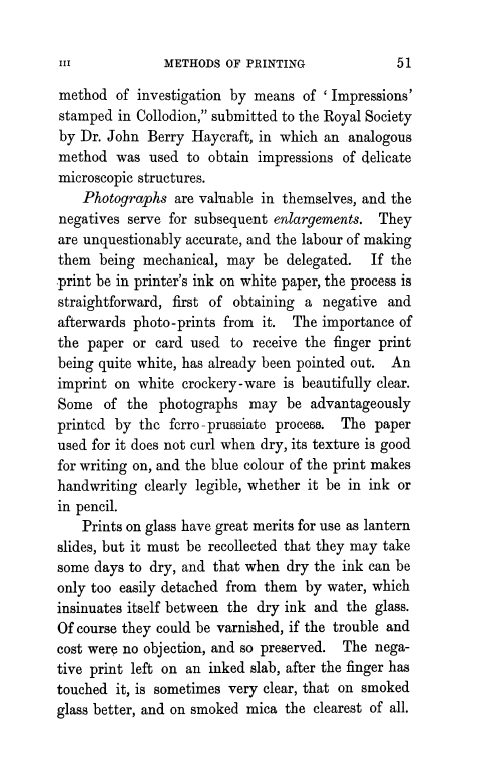| ||||||

OCR Rendition - approximate
III METHODS OF PRINTING 51 method of investigation by means of ` Impressions' stamped in Collodion," submitted to the Royal Society by Dr. John Berry Haycraft, in which an analogous method was used to obtain impressions of delicate microscopic structures. Photographs are valuable in themselves, and the negatives serve for subsequent enlargements. They are unquestionably accurate, and the labour of making them being mechanical, may be delegated. If the .print be in printer's ink on white paper, the process is straightforward, first of obtaining a negative and afterwards photo-prints from it. The importance of the paper or card used to receive the finger print being quite white, has already been pointed out. An imprint on white crockery-ware is beautifully clear. Some of the photographs may be advantageously printed by the ferro - prussiate process. The paper used for it does not curl when dry, its texture is good for writing on, and the blue colour of the print makes handwriting clearly legible, whether it be in ink or in pencil. Prints on glass have great merits for use as lantern slides, but it must be recollected that they may take some days to dry, and that when dry the ink can be only too easily detached from them by water, which insinuates itself between the dry ink and the glass. Of course they could be varnished, if the trouble and cost were no objection, and so preserved. The negative print left on an inked slab, after the finger has touched it, is sometimes very clear, that on smoked glass better, and on smoked mica the clearest of all.
|